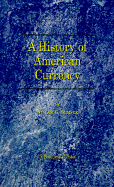|
|
|
|
||||||

|
A History of American Currency: With Chapters on The English
Bank Restriction and Austrian Paper Money
By William G. Sumner 2000/12 - Beard Books 1587980045 - Paperback - Reprint - 397 pp. US$34.95 A fascinating glimpse of the history of American paper currency and the rise of banks. Publisher Comments
This is an absorbing historical sketch of the history of American paper currency from the American colonies through the Civil War. Included are the development of some of the earlier major banks, as well as the financial crises of 1819 and 1825. A discussion of currency and tariffs as a political issue is included. The English Bank restriction of 1797 and the Bullion Report of 1810 are examined in detail in discussing the question of how to regulate convertible currency. A chapter on Austrian paper money is an interesting addition. An important glimpse of history to delight all economists, bankers, and historians.
Author's Preface From Bob Shippee
He was ordained an Episcopal minister and from 1872 was professor of political and social science at Yale. In economics he advocated a policy of extreme laissez-faire, strongly opposing any government measures that he thought interfered with the natural economics of trade. In A History of American Currency (1874), his first book, Sumner focused on the money issue, then agitated by calls for the retirement of the Civil War "greenbacks" and later the establishment of a "bimetal" standard of gold and silver. Although he paid little attention to the demonetarization of silver in 1873 (a move critics later called the "Crime of '73) he was distressed to see leading classical economists support international bimetallism, among them his Yale colleague Francis Amasa Walker. Holding his fire, he initially called only for a sound currency, but in 1878 finally attacked bimetallism publicly. As a sociologist he did valuable work in charting the evolution of human customs—folkways and mores. He concluded that the power of these forces, developed in the course of human evolution, rendered useless any attempts at social reform. He also originated the concept of ethnocentrism, a term now commonly used, to designate attitudes of superiority about one’s own group in comparison with others. His major work was Folkways (1907). In 1890 Sumner fell victim to what was termed a "nervous illness," the result of a punishing work schedule that had resulted in sixty articles and two books in the previous three years. Although he resumed his duties at Yale in the fall of 1892, the collapse took a permanent toll on his energies and output. Between 1876 and 1890, he had published some 108 articles and seven books. In the five years following his breakdown, he wrote "only" four articles and two books. Although in 1896 he added another dozen articles and a book, he averaged but two articles a year during the rest of his career. Whatever his intellectual shortcomings, Sumner's hardheaded honesty and bold address of underlying issues has kept alive interest in his thought and career in recent decades. He died in April 10, 1910.
|
|
|
|
home
| about us
| contact us
| related
sites |